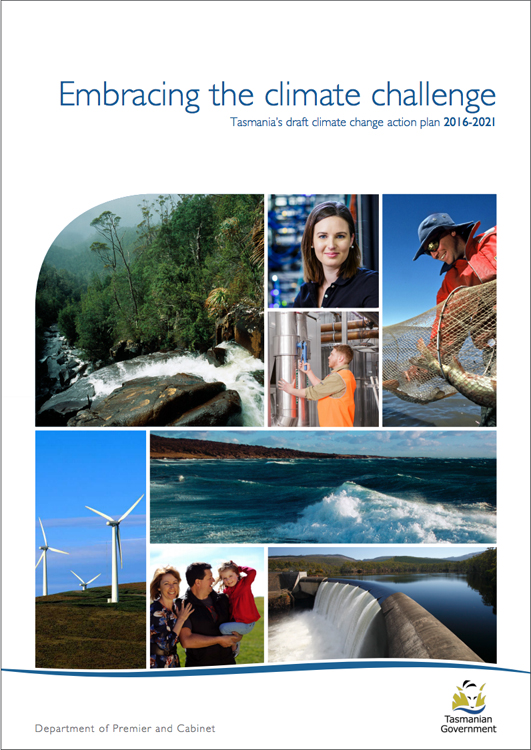It’s time Tasmanian leaders accepted responsibility for mitigating climate change.

Matthew Groom’s claim in December 2015 to be “embracing the climate challenge” rings hollow in light of subsequent inaction.
Will Hodgman’s government is nothing if not busy when it comes to getting the message out.
In the past month it has put out 126 media releases – over four every day including weekends. The long list includes worthy initiatives in infrastructure, job training, gender equality, suicide, cyber-bullying, domestic violence and Aboriginal recognition.
Some media releases touch on energy and environment issues, including the big winter floods, energy security and bushfire preparation. Just one of them mentions climate change, in the context of the review of last summer’s wilderness fires led by environmental scientist Tony Press.
Press’s December report warns that climate change is causing summers to extend into autumn and increasing the incidence of fires sparked by lightning, especially since 2000. That in turn is raising wilderness fire risk and will make fire management more challenging as this century progresses.
Environment minister Matthew Groom made no mention of that rising challenge in his long media release on Press’s review, but he did say that wilderness fires weren’t unique to 2016 and had been recorded as far back as the 1930s. What’s that about? Is he saying that Press exaggerates future climate change?
In 2014 Groom disbanded the Tasmanian Climate Action Council, which for six years had advised government on climate change, on grounds that it didn’t justify its cost. In its last full year that cost amounted to $152,000. By my reckoning it would have been one of the cheapest advisory bodies.
In late 2014 former TCAC members re-assembled in a new voluntary group called Climate Tasmania. Today its numbers include climate scientists, lawyers, economists and others with something to offer public policy on climate change. I have been a member since January 2016.
Last week the co-convener of Climate Tasmania, economist Phillip Harrington, challenged the government “to make 2017 the year to re-set the clock on the state’s climate change strategies, to protect Tasmania from further economic harm”.
Harrington pointed out that weather events last year were the direct cause of a costly energy crisis, devastating wildfires, road and rail damage and loss of agricultural soils. This, he said, showed the fallacy of decision-makers’ attitude that Tasmania was a low-risk part of the world.
He lamented the failure of successive governments to implement any effective climate strategy for Tasmania and called for leaders to jointly enter a “fresh dialogue” and acknowledge the crucial place of climate action in Tasmania’s future economic and social well-being.
The annual Bureau of Meteorology climate report issued last week underlined Harrington’s words. 2016 was the state’s warmest year and included two notable extremes: the wettest eight months on record (May to December) immediately after the driest eight months on record.
Approaching three years into the Hodgman government, having dumped the policy work of his predecessors, Groom has again put off finalising a climate change strategy. It’s as if he harbours a vain hope that delaying the process will cause this difficult problem to go away.
Besides risk, this is about responsibility. Every jurisdiction, no matter how small, has a duty to its people and the world to do all it can to reduce carbon emissions. Inaction up the pecking order, which is true for Australia at present, makes the responsibility that much greater.
The Hodgman government isn’t the first to shirk its responsibility. Since the first climate legislation was passed under Paul Lennon, successive Labor governments – and the present opposition – have like their opposite numbers treated climate change as “non-core” business.
That attitude will not be favoured by history. Despite the protests of self-styled “sceptics”, our scientific understanding of climate change and the human actions that have driven it are steadily building, and with that inexorable progress will come increasing electoral support for action.
The Hodgman government is at a crossroads. It can continue to avoid climate action under the delusion that this will not be a future electoral issue. If that happens it will join history’s also-rans.
Or it can seek agreement across parliament and community to make climate change a top public priority, and act accordingly. If it succeeds in that, it will become a government for the ages.
